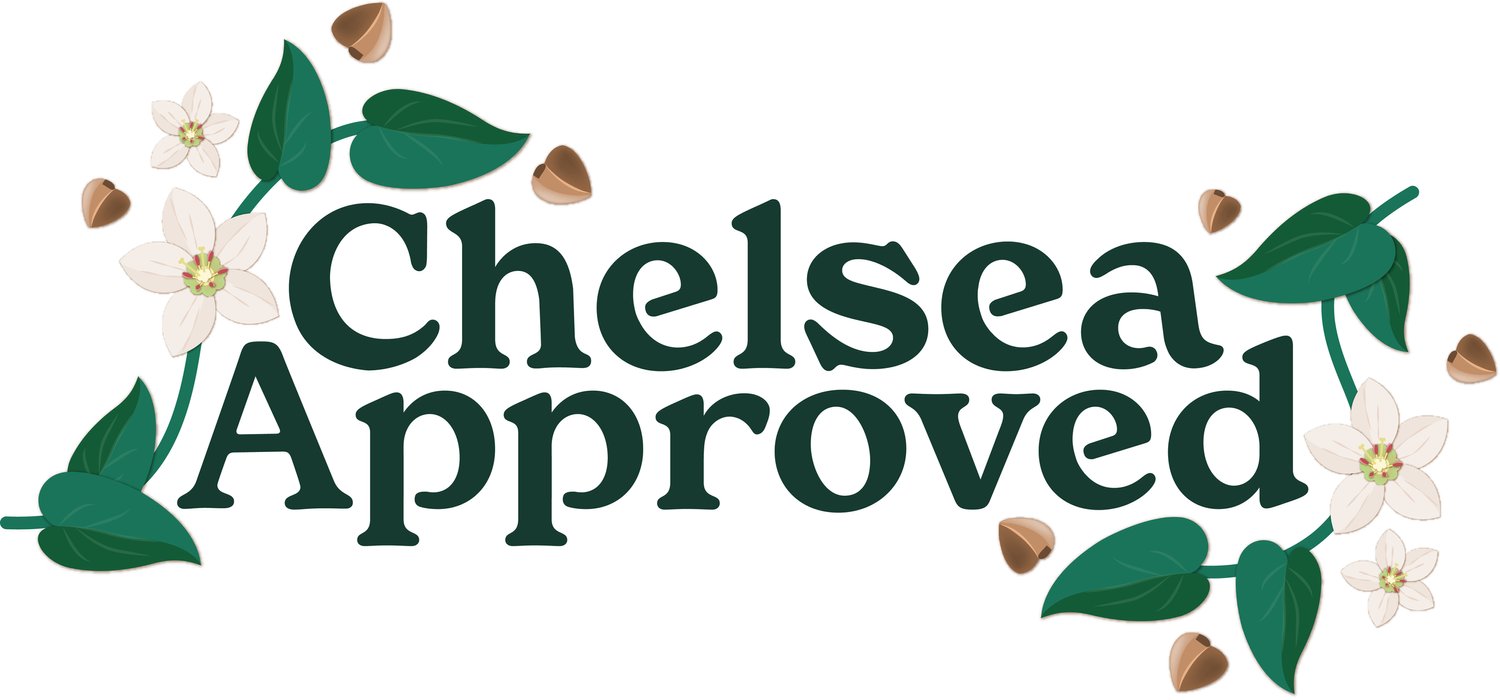A Guide to Gluten Free Flours
July, 2023 - Chelsea Austin
Whether your new to a gluten free diet or have been gluten free for years, you can always learn something new about baking with gluten free flours! Check out this guide with some common gluten free flours, and learn which one is the Chelsea Approved favorite!
Transitioning to a Gluten Free Diet
I started following a gluten free diet 9 years ago after testing positive for Celiac Disease on a blood test. I was devastated because I had heard rumors about how restrictive a gluten free diet could be. The first year was very difficult for me, but now I don’t think twice about being gluten free.
Something that helped me a lot in the beginning was doing research to find out what being gluten free really meant, and how it would affect my ability to eat the foods I loved. It took me a really long time to figure out what was safe and not safe to eat on a gluten free diet. But once I understood how to read ingredient labels, I found a lot of really great substitutes for my favorite foods and began to feel better.
While there area lot of gluten free flour options these days, Eventually, I had no options left and had tried every single gluten free baked good available in the gluten free aisle at my local grocery store. I started to dislike them because I couldn’t help but remember the indulgent gluten full chocolate chip cookies I used to eat as a kid. As you may have guessed, that was a huge motivator for me in starting Chelsea Approved; to create delicious gluten free desserts that taste just like the classics…but for this blog post, I want to provide some helpful information for people who are new to a gluten free diet, or those who would like a refresher.
What does it mean to be gluten free?
The three most well known gluten containing grains are wheat, barley, and rye. It’s important to note that malt, which is often used in beer making, is derived from malted barley aka barley. Being gluten free means avoiding these grains and any food that includes them as an ingredient.
Gluten is most commonly found in breads, baked goods, pasta, and cereals. This is because the gluten protein found in these flours acts as a natural binding, giving dough its elastic and stretchy features. This texture traps gas within baked goods, providing a light, airy structure allowing these foods to rise. This is why gluten baking is so difficult, because without gluten, baked goods have the potential to be grainy, dense and crumbly.
What flour is gluten free?
There are a lot of flours out there that are naturally gluten free. Many are derived from grains, but some are creatively made from ground nuts or seeds. Each has aspects that can be seen as good or bad, but for this list, I have included general tips about taste and texture one can expect when baking with these specific flours.
Below is a compilation of the most common gluten free flours I have seen. Additives such as stabilizers and binders used in gluten free baking have also been included. Please know that this is not an exhaustive list of all gluten free flours.
Which gluten free flour is best for baking?
When diving into gluten free baking, it's important to remember that it’s going to be different from traditional baking. Again, it’s because of the absence of gluten making it difficult to achieve the texture and structure of baking with gluten. It’s a learning curve, but there are definitely techniques and ingredient combinations you can find that will make it easier. My favorite gluten free flours to bake with are buckwheat and oat flour, but I recommend experimenting with all of them to find what works best for you and your baking preference.
For those new to gluten-free baking, it's important to remember that with time and practice, you can recreate nearly any dish gluten-free. From fluffy cakes to crispy cookies, there is a gluten-free variation for almost every food out there. Patience, experimentation, and an open mind will help you discover exciting new flavors and textures.
Gluten free baking can be good!
Gluten-free baking offers a realm of possibilities for those with dietary restrictions or those simply looking to explore new culinary horizons. While it may require some adjustments and a learning curve, the joy of creating delicious gluten-free baked goods is well worth the effort. By understanding the properties of various gluten-free flours, embracing the challenges, and experimenting with different ingredients and techniques, you can confidently embark on your gluten-free baking journey and create delectable treats that will satisfy your taste buds and impress friends and family alike.
Looking to kickstart your gluten free baking? Check out Chelsea Approved Baking Mixes!
Are you ready to bake?? Chelsea Approved baking mixes make gluten free baking simple and easy. They are gluten free, dairy free, and egg free, and don’t have any binders or unnecessary ingredients. Try them today!






